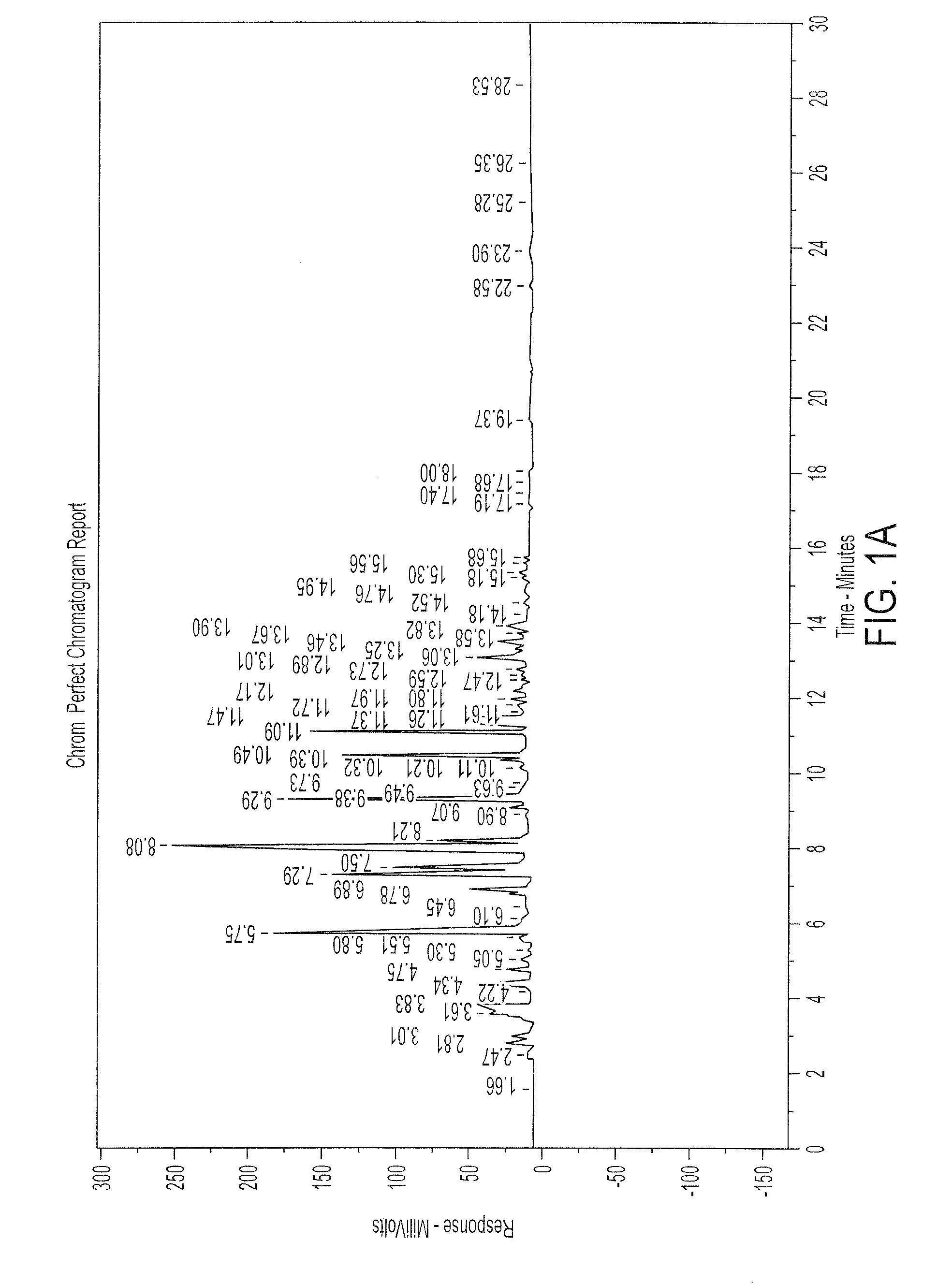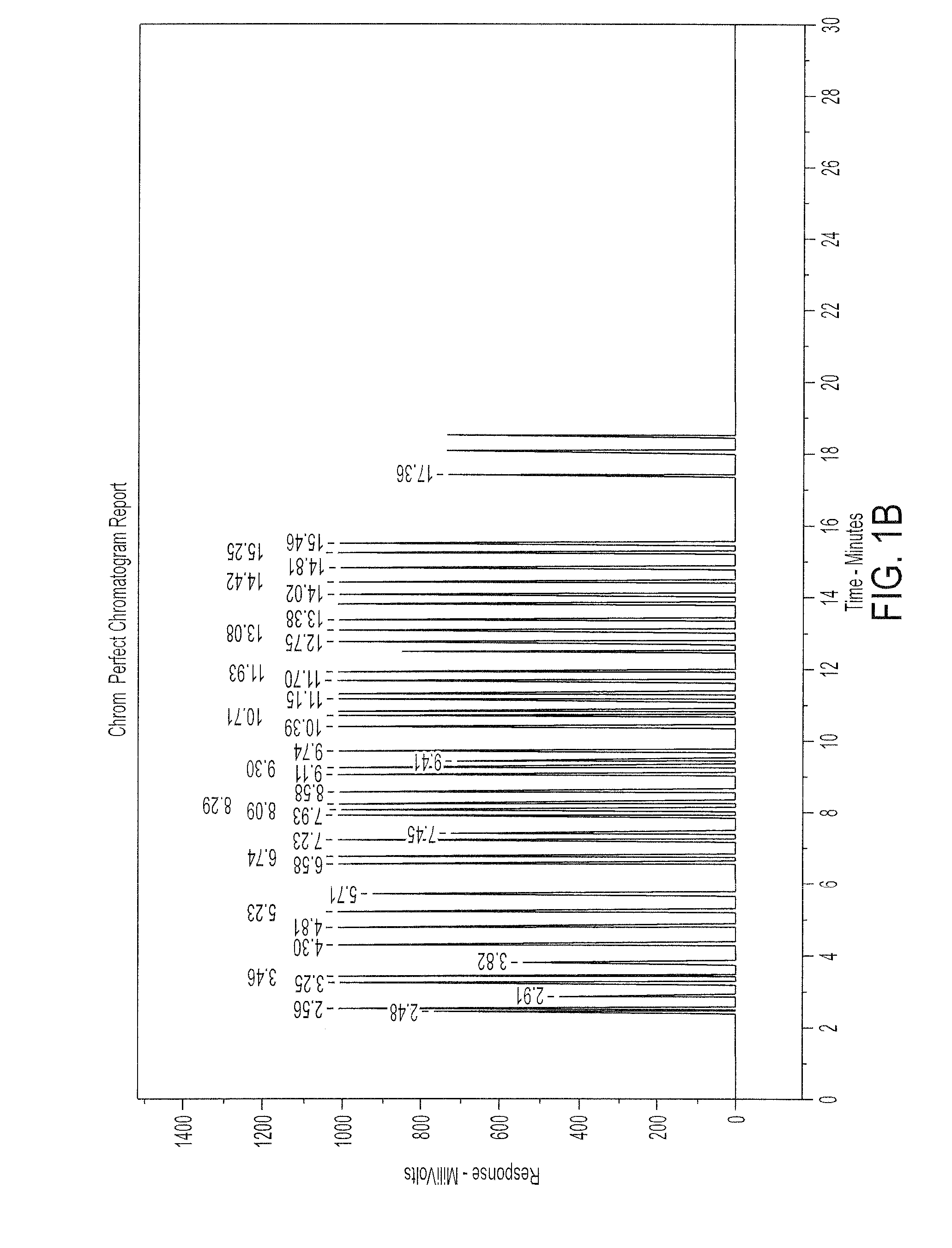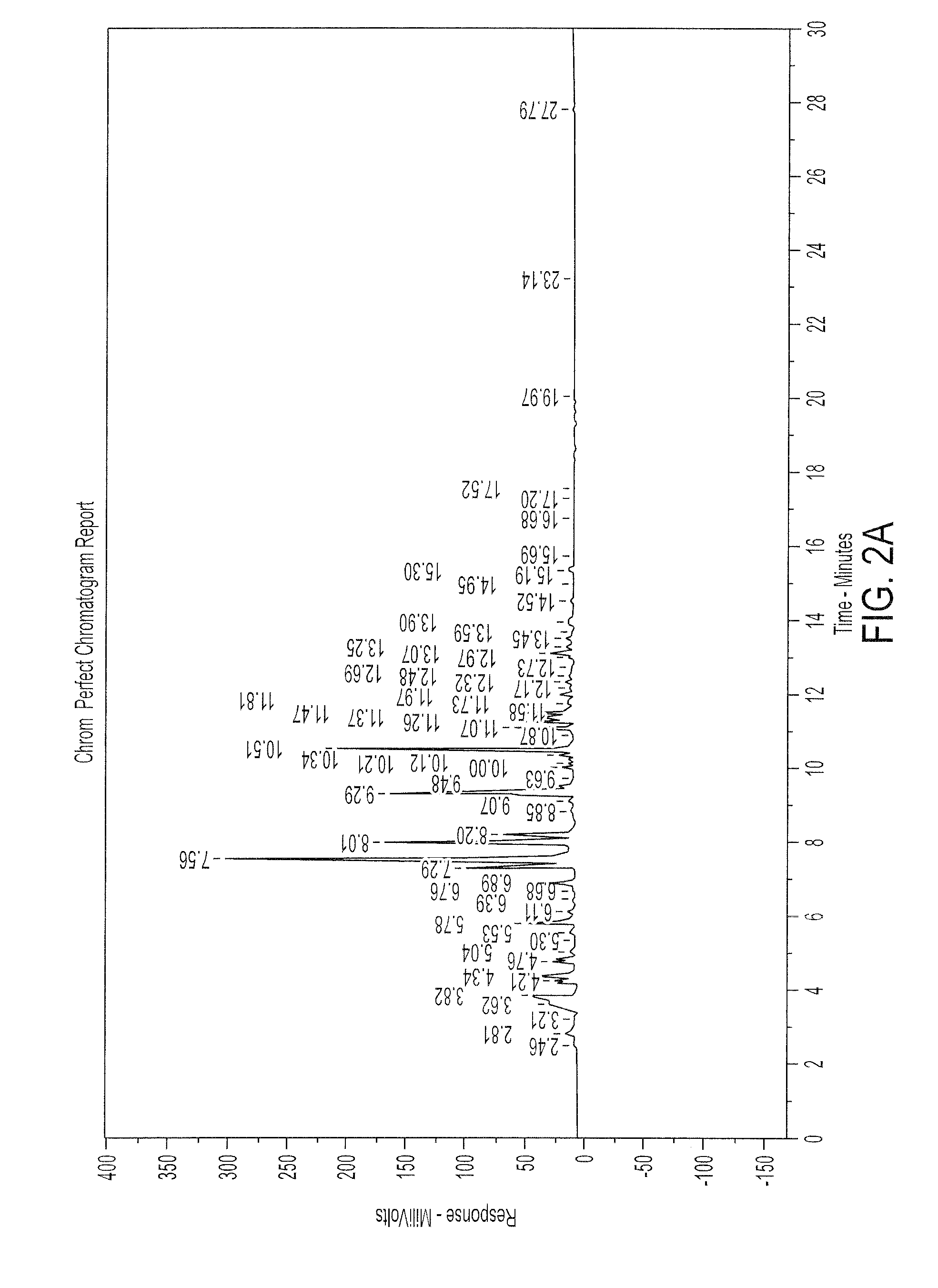Quality Enhancement of Coffee Beans by Acid and Enzyme Treatment
a technology of acid and enzyme treatment and coffee beans, applied in coffee, green coffee treatment, food science, etc., can solve the problems of low coffee flavor and aroma, high cost and time-consuming methods of breeding and raising civets, etc., to improve the quality of coffee beans, and optimize the acid and enzyme treatment combination
- Summary
- Abstract
- Description
- Claims
- Application Information
AI Technical Summary
Benefits of technology
Problems solved by technology
Method used
Image
Examples
example 1
Preliminary Experiments
[0092]Coffee treatments: Approximately 45 Kg of coffee beans (also referred to herein as “cherries”) (Coffea Arabica L, Limani variety) were harvested at the University of Puerto Rico “Experimental Station” in Adjuntas, PR. They were hand picked at the ripe state (red color) maintaining the most color uniformity as possible as instructed to the workers. The cherries were then put in selection tables where they were cleaned of leaves and immature beans. This process was completed in approximately one hour, which prevented the harvested beans from starting to ferment. The cherries were then put into plastic containers. The cherries were then put in one 3785 cm3 Ziploc® bags and frozen for 24 hours at −40 degrees C. After 24 hours the frozen cherries were thawed using tap water and de-pulped using a custom made grape crusher. The beans covered by the mucilage were collected and put in a plastic container. The beans weighed 27 Kg showing a ...
example ii
Enzyme Treatment of Coffee Beans
Coffee Harvesting
[0105]About 77 Kg of coffee cherries (Coffea Arabica L, Limani variety) were harvested at the University of Puerto Rico “Experimental Station” in Adjuntas. PR. They were hand picked at the ripe state maintaining as much color uniformity as possible as instructed to the workers. The cherries were then put in selection tables were they were cleaned of leaves and immature beans. This process was completed in approximately two hours, which prevented fermentation of the harvested beans.
[0106]The harvested and cleaned beans were processed by the ecological method. This method was developed to reduce the volume of waste water involved in wet processing while maintaining the characteristics of the wet processed coffee. This method involves the use of an “ecological processing” machine, which pulps the cherries and later removes the mucilage surrounding the parchment by friction. It has been found to be very effective a...
example iii
Quantification of Effects of Treatment on Coffee Beans
[0126]Quantification of changes in flavor, texture, aroma and color of coffee beans as a result of acid and enzyme treatments was determined by Sensory Analysis, Scanning Electron Microscope, Electronic Nose and Machine Vision.
[0127]To quantify the changes in flavor of coffee beans as a result of treatments, first it was necessary to establish if statistically there were significant differences between the treated samples and controls. For this purpose a sensory panel was conducted. A triangle test was performed with both samples and 80 panelists (see Table 6, above).
[0128]Forty out of 80 panelists were able to choose the sample that was different from the other two, meaning that there are significant differences between samples even at 1% error, for which 38 would be necessary to establish significant differences.
[0129]If the correct sample was chosen, the panelists were asked to comment on the differences found ...
PUM
 Login to View More
Login to View More Abstract
Description
Claims
Application Information
 Login to View More
Login to View More - R&D
- Intellectual Property
- Life Sciences
- Materials
- Tech Scout
- Unparalleled Data Quality
- Higher Quality Content
- 60% Fewer Hallucinations
Browse by: Latest US Patents, China's latest patents, Technical Efficacy Thesaurus, Application Domain, Technology Topic, Popular Technical Reports.
© 2025 PatSnap. All rights reserved.Legal|Privacy policy|Modern Slavery Act Transparency Statement|Sitemap|About US| Contact US: help@patsnap.com



